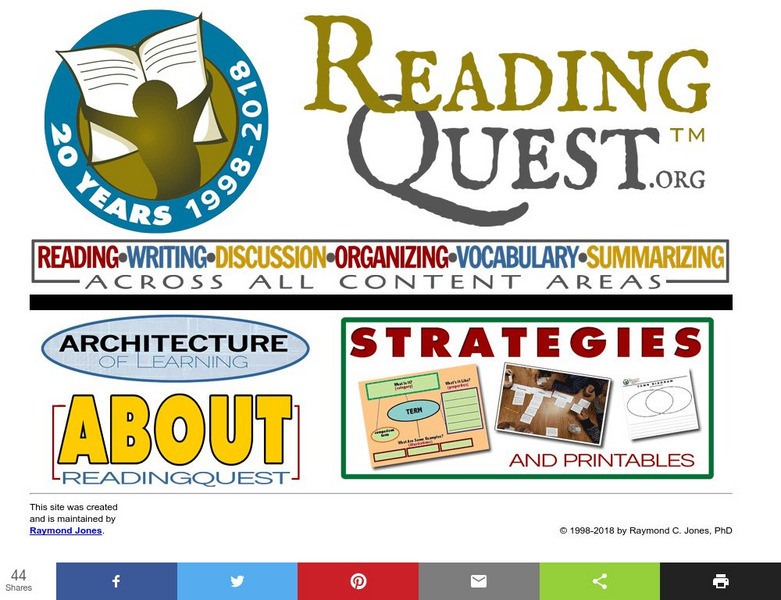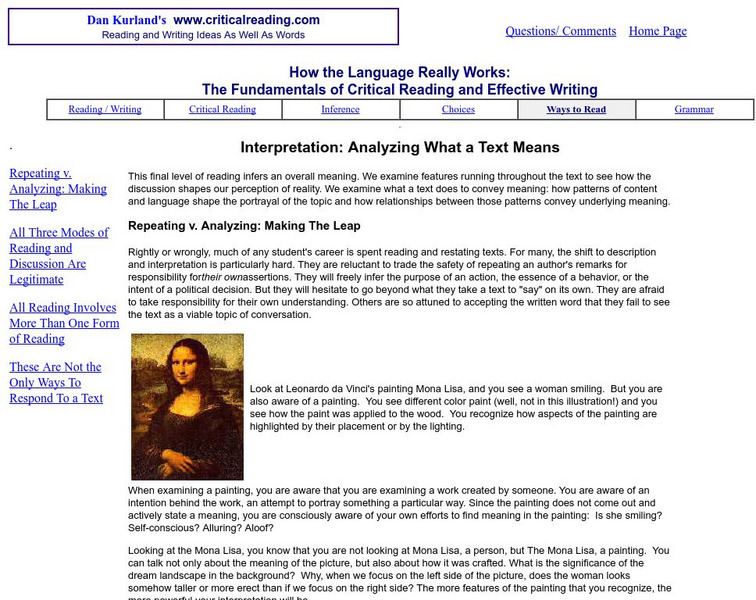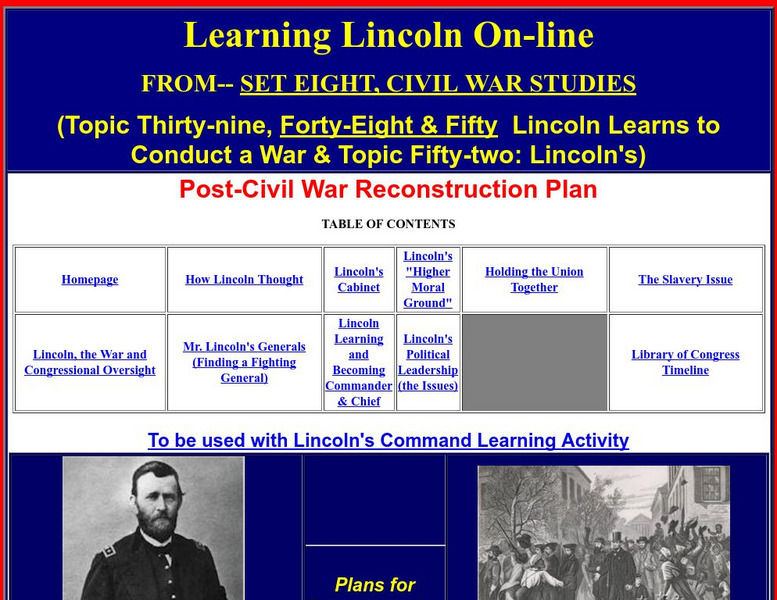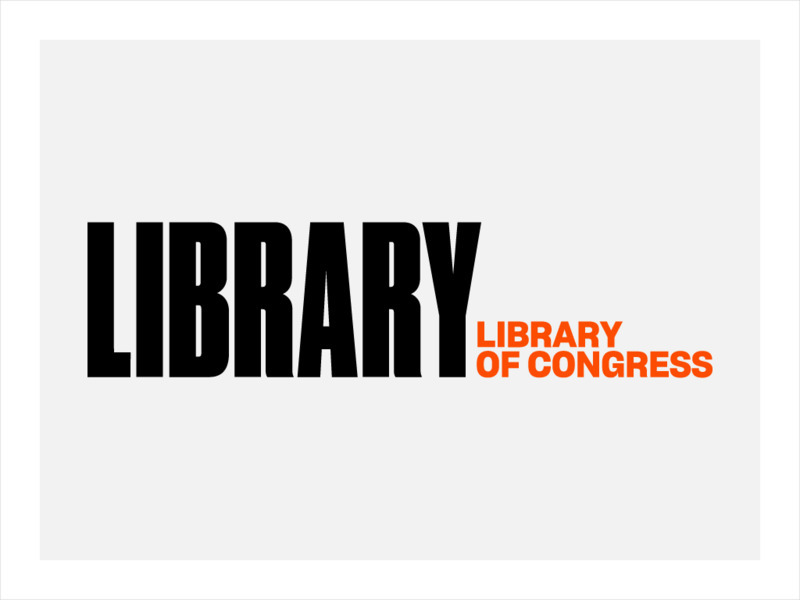Other
Reading Quest: Making Sense of Social Studies
Teaching students to read well in areas other than language arts requires teaching and reinforcing the kinds of reading strategies taught here. There are 27 strategies, ranging from brainstorming to word mapping. The site includes PDF...
Virtual Salt
Handbook of Rhetorical Devices: Analogy
Defines analogy. Also explains the reasoning behind the multiple levels of comparisons within an analogy. Includes examples and quotes from famous authors.
Georgetown University
Georgetown University: Bernard Malamud (1914 1986)
An analysis of Bernard Malamud's writing style can be found here from Georgetown University. The article discusses the typical themes, characters, settings, and gives a comparison of his works to other famous authors.
Other
Critical Reading: How the Language Really Works: Interpretation
In this brief article, the author considers the ways that readers interpret text. An interesting comparison between reading and viewing a painting is worth a look.
Other
Learning on Line: Lincoln's Reconstruction Plan
Part of a larger project about Abraham Lincoln as president, this page discusses the Reconstruction plans put forth by Lincoln, the Congress, and Andrew Johnson. Student comparison activity is included. Author is gifted education teacher...
ClassFlow
Class Flow: Alike? Different? Compare and Contrast
[Free Registration/Login Required] This flipchart contains numerous interactive activities. The flipchart introduces students to the concept of comparison and contrast, how it relates to real life, how it is used by authors, and signal...
Library of Congress
Loc: Teachers: The Grapes of Wrath
A Library of Congress lesson on "The Grapes of Wrath," through which students discover how cultural artifacts from the book support its themes and see connections "between the social, cultural, and literary contexts of literature."








